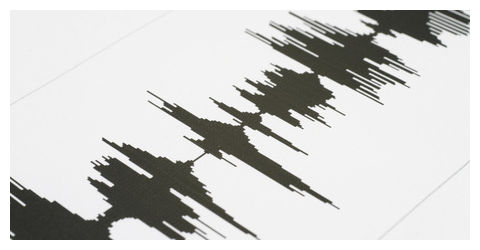
© Thinkstock
Last night's magnitude 7.0 earthquake in the South Taranaki Bight is the largest to strike the region in more than 100 years, GNS Science says.
The quake struck at 10.36pm, 60km south-west of Opunake in Taranaki, at a depth of 230km.
It was felt strongly around the west coast of the lower North Island, and was widely felt from the Bay of Plenty to Canterbury.
No tsunami was generated by the quake.
Waiouru resident Adrienne Murphy told the Herald it was the "biggest shake we have felt in years".
Residents in Wellington reported being startled by shakes, which lasted for about 15 seconds.
Some said the shakes were strong enough to topple household appliances, but the central Fire Service communications centre said it had received no reports of earthquake-related damage.
Wellington resident Sam Rowe said he felt the walls of his house shaking.
"It shook for about 5 to 10 seconds - things rattled but nothing was knocked over. It wasn't that severe ... and our power's still on."
Blogger David Farrar escaped from his Wellington apartment building.
He wrote on the social networking site Twitter: "That was a shaker. I made it down ten floors in around 45 seconds. First time I have felt need to evacuate my building."
TVNZ reporter Heather du Plessis-Allan also took to Twitter soon after the quake, saying: "It knocked my telly over."
Tranz Metro warned there may be possible delays to services along the Kapiti line this morning due to the quake, and an inspection of the network has been completed.
The South Taranaki Bight is no stranger to large earthquakes; A magnitude 6.4 earthquake struck on March 15, 2005, at a depth of 150km.
Seismologist Lara Bland said the quake was the largest to strike the South Taranaki Bight in about 119 years. In 1893 a quake struck measuring about magnitude 7.2.
Only one aftershock has been recorded following the quake - a magnitude 4.6 aftershock nine minutes later - although GNS Science will be doing a background check today to see if there were others.
"But we're not expecting a very rich aftershock sequence," Ms Bland said.
GNS Science said the quake was typical to other deep North Island tremors, in that the strongest shaking occurred to the east of the epicentre, rather than directly above it.
"To an extent, an earthquake that large will often be felt reasonably widely anyway, but because of the subduction zone and where it occurred, the energy has travelled very efficiently back up the dipping plate that it has occurred on so it has come to the surface in a very efficient path," Ms Bland said.
"That means we feel it on the surface stronger than if it had difficult path to follow.
"Part of that effect is that for deep earthquakes that we see on the North Island, they are often felt surprisingly strongly to the east of the epicentre, so here we have had strong reports in some parts of the east coast of the South Island and also Wellington and Palmerston North.
"Those felt intensities almost match those in towns which were closer to the epicentre."
Large earthquakes are not unusual in New Zealand, with a quake larger than magnitude 7 occurring on average every three years.
Ms Bland told Radio New Zealand the intensity of the quake would have felt similar to how many of the Canterbury aftershocks feel.
She said it was fortunate the earthquake had struck so deeply, as a shallow quake of a similar magnitude - such as the Darfield quake of September 4, 2010 - would have been a "a different picture".
Reader Comments
to our Newsletter